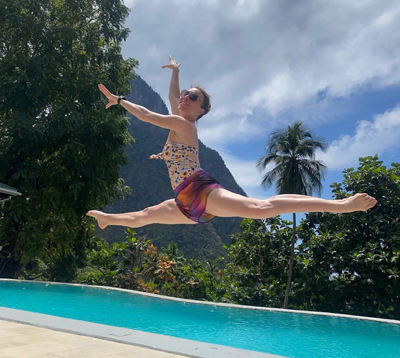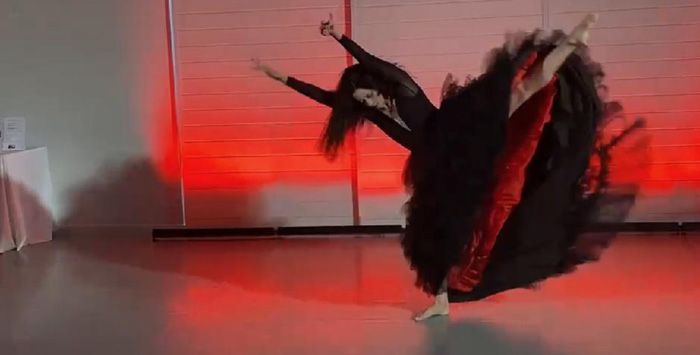 Dance Medicine
Dance Medicine
Some people may not think of dancers as athletes, but dancers know better. In dance, artistic statements are presented through great displays of athletic skill. Dancing requires flexibility, strength, and endurance. The training required to dance well is no less physically strenuous or mentally challenging than the training required for any competitive sport. And, like any athlete, a dancer is at risk of a range of injuries.
Here at the Lentini Chiropractic office, Dr Lentini has worked with dancers from all levels, both professional and amateur. As a competitive dancer himself, in roller, ice and Ballroom (10 dancer International Style in Dancesport to gold level), he has a good understanding of dance issues and, with advanced training, on how to help dancers recover from injury and most importantly, improve performance.
Preventing Common Dance Injuries
 In 2009, some 160,000 people were treated for dance-related injuries. As you’d expect, many dance-related problems affect the feet and ankles, but dancers can also sustain spinal, lower back, hip, and knee injuries. Repetitive practice of movements and routines may cause participants to get sprains, strains, stress fractures and tendon injuries. Dancers are particularly susceptible to these overuse conditions because repetitive practice is central to dance training. Without proper rest and treatment, overuse injuries may grow worse over time.
In 2009, some 160,000 people were treated for dance-related injuries. As you’d expect, many dance-related problems affect the feet and ankles, but dancers can also sustain spinal, lower back, hip, and knee injuries. Repetitive practice of movements and routines may cause participants to get sprains, strains, stress fractures and tendon injuries. Dancers are particularly susceptible to these overuse conditions because repetitive practice is central to dance training. Without proper rest and treatment, overuse injuries may grow worse over time.
Dancer Safety, Common Accidents, and Serious Injuries
| Stress Fractures: | The foot hitting the floor repeatedly may cause a dancer to sustain a small crack in the bone, called a stress fracture. |
| Knee Pain: | Turning, twisting, jumping, and landing may produce knee pain. Patellofemoral pain, sprains, and strains are common. |
| Shin Splints: | Jumping on a hard floor or landing improperly may lead to shin splints. Dancers experience pain in the front areas of their lower legs. |
| Lower Back Pain: | Repetitive extension or flexion mixed with sudden muscle contractions and imbalanced strength and flexibility may produce lower back pain. Stress fractures in the back may also occur, especially in younger, still-growing dancers. |
| Foot Problems: | The dancer’s feet are akin to a pianist’s hands and may see a range of problems, including bunions, corns, jammed toes, and tendinitis. |
Tips For Safety
- Warm up and cool down: Before dancing, warm up with stretches and light aerobic exercises. If it’s cool in the dance studio, wear a sweater and leggings—at least until you’re warm. Also, stretch and exercise at the end of your session to cool down.
- Safe in the studio: Create the safest environment for dancing by making sure that the floor is clear of debris and slick spots that could lead to slips and falls. Also, be sure that dancers have enough space to perform without colliding with other dancers.
- On your feet: Select the appropriate shoes for the type of dance you are performing or practicing. Make sure the shoes are snug, yet comfortable. Young ballet dancers should dance in pointe shoes only when they are strong enough to do so.
- Sit one out If you’re tired or hurt; stop dancing. Dancing while in pain or overtired can lead to injuries, so take time to rest and recover. Also, don’t mask pain with ice or painkillers. You’ll do more damage in the long run.
- The right technique: On an artistic level, the right technique is essential to perform dances properly, but good technique may also help dancers avoid injury. Practicing moves using bad technique and poor body alignment, over and over, may cause strains and soreness.
- For growing dancers: Overuse, along with poor nutrition, may diminish the bone strength development that occurs during the adolescent growth period. Don’t overdo it, eat right, and leave plenty of time for rest and recovery.
Steps for Parents and Instructors to Help Prevent Dance Injuries
- Tell students to speak up when they are injured or need a break. Let them know that their health comes first.
- Create an encouraging environment, one that recognizes effort and rewards progress but does not demand perfection. Putting too much pressure on a young dancer may lead to overtraining injuries, along with emotional stress.
- Pay close attention to the maturity, physical development, and skill levels of the dancers. Don’t move a dancer to the next level if he or she isn’t ready.
- Both male and female dancers may become overly concerned with weight and physical appearance, but these concerns are most often seen in female dancers. An obsession with being thin may lead young women to take extreme measures in diet and exercise. Watch for symptoms of the “female athletic triad:”
- Abnormal Eating – When athletes try crash diets or binge eating, they may not be getting the proper nutrition.
- Menstrual Dysfunction – Hormonal changes that stop menstrual periods (amenorrhea) may be caused by poor nutrition, low calorie intake, excessive exercise, stress, or low body fat levels.
- Low Bone Density for One’s Age – When female athletes don’t have their periods, the body’s bone-building process is disrupted, making bones more likely to break.
- If any of these three things are happening, talk to your doctor.


